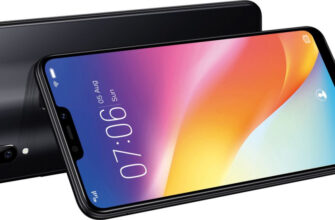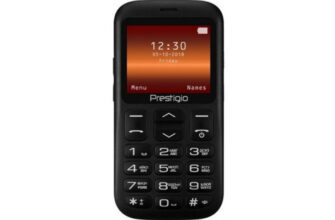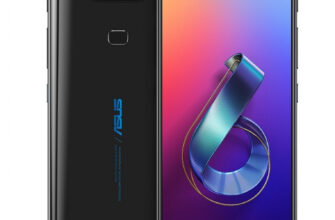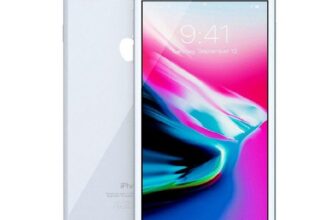Review of the best according to the editorial board. On the selection criteria. This material is subjective and does not constitute advertising and does not serve as a purchase guide. Before buying, you need to consult with a specialist.
At the heart of any computer technology is a processor. This also applies to smartphones – it is the power of the mobile chipset that determines how quickly they will cope with the solution of certain tasks. When reading the characteristics of a device, the processor should be looked at, if not first, then certainly not least. But which chipsets perform well? For many buyers, their names won't tell you anything. Perhaps the time has come to rectify this situation. This article will introduce you to the ten best processors installed in modern smartphones. In this case, we will talk not only about top-end chips, but also about mid-budget, and even the most inexpensive solutions.
- Main characteristics
- Rating of the best processors for smartphones
- The best processors for budget smartphones (up to RUB 10,000)
- Qualcomm Snapdragon 430
- MediaTek MTK 6737T
- MediaTek MT652M
- The best processors for smartphones in the middle price segment (up to 20,000 rubles)
- Qualcomm Snapdragon 650
- MediaTek MT6757T Helio P25
- Samsung Exynos 7885
- The best processors for premium smartphones
- Apple A9X
- Xiaomi Pinecone S1
- Qualcomm Snapdragon 835 MSM8998
- Samsung Exynos 9 Octa 8895M
- Conclusion
Main characteristics
- To begin with, you need to understand that any microprocessor (CPU) consists of certain components. In particular, it includes many transistors. And the smaller these components are, the less power the entire chipset will consume as a whole. Therefore, professionals who regularly review mobile technology, first of all, look at the technical process by which the processor is made. It is measured in nanometers. If we compare chipsets made according to the 12 and 30 nm process technology, then with the same clock frequency and number of cores, they will have completely different power consumption. That is, a smartphone with a second processor will require a charger to be connected much more often (with absolutely the same other specifications and completely identical operating system). The reduction in power consumption comes from the fact that smaller transistors produce less heat.
- Another important characteristic is the number of cores. But don't think that the eight-core chipset will necessarily be more powerful than its quad-core counterpart. Even our rating will confirm that this is not always the case. Qualcomm has flagship solutions in the past, consisting of four cores, which are distinguished by an increased clock frequency (the third important characteristic). Competitors at that moment offered eight-core chipsets, the clock frequency of which is noticeably lower. However, in some usage scenarios, it is the eight-core solution that shows itself better – when you run some simple application, only one core will work, which in a quad-core product will be larger and less energy efficient. However, in real life the difference is barely noticeable, and smartphones are increasingly working under load, processing a large amount of information even just in the background.
- Be that as it may, the number of cores and their clock frequency directly affect how quickly the operating system and all applications will run. Budget smartphones are equipped with a quad-core chipset, the frequency of which does not exceed 1.4 GHz. Expensive devices run faster, as they have a processor with eight cores, half of which have a frequency of 2.2 GHz. Well, top-end mobile chipsets can be even more powerful.
Rating of the best processors for smartphones
| Nomination | a place | Name of product | rating |
| The best processors for budget smartphones (up to RUB 10,000) | 1 | Qualcomm Snapdragon 430 | 4.9 |
| 2 | MediaTek MTK 6737T | 4.8 | |
| 3 | MediaTek MT652M | 4.7 | |
| The best processors for smartphones in the middle price segment (up to 20,000 rubles) | 1 | Qualcomm Snapdragon 650 | 4.9 |
| 2 | MediaTek MT6757T Helio P25 | 4.8 | |
| 3 | Samsung Exynos 7885 | 4.7 | |
| The best processors for premium smartphones | 1 | Apple A9X | 4.9 |
| 2 | Xiaomi Pinecone S1 | 4.8 | |
| 3 | Qualcomm Snapdragon 835 MSM8998 | 4.8 | |
| 4 | Samsung Exynos 9 Octa 8895M | 4.7 |
The best processors for budget smartphones (up to RUB 10,000)
Qualcomm Snapdragon 430
Rating: 4.9
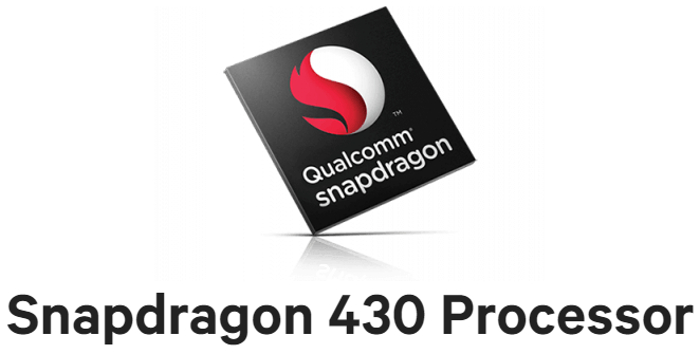
- Process technology: 28 nm
- Number of cores: 8
- Clock frequency: 1400 MHz
Ideal for a relatively inexpensive smartphone or tablet. But until some time, it still cost the manufacturer a decent amount, and therefore the chip was found only in devices for 12-15 thousand rubles. But recently, Qualcomm changed its pricing policy, in connection with which the processor began to be found in cheaper devices. That is, it has become a competitor to very inexpensive chipsets from MediaTek.
The product consists of eight Cortex-A53 cores. The clock frequency of each of them can reach 1.4 GHz. The games use the graphics accelerator Adreno 505. We cannot say that it works perfectly, but the level of graphics should not be reduced too much. The chipset processes not only graphics, but also sound – the add-on in the form of Hexagon DSP is responsible for this. It is assumed that this not only improves sound quality, but also reduces power consumption, because the computing cores rest when playing music.
In the AnTuTu benchmark, such a processor is gaining about 45 thousand points. As befits a modern mobile chipset, it supports high-speed data transmission over LTE. However, all products considered in this rating can boast of this. As for the cameras, the maximum chip supports a dual module with a resolution of up to 21 megapixels. Quick Charge 3.0 fast charging technology is also available to the smartphone manufacturer.
Snapdragon 430 was announced in September 2015. Xiaomi Redmi 3S, Lenovo Vibe K6 and Wileyfox Swift 2 were released quite quickly – all these smartphones are based on the aforementioned processor. Now the number of devices with a mid-budget chip from Qualcomm is extremely difficult to count – it is so great.
MediaTek MTK 6737T
Rating: 4.8

- Process technology: 28 nm
- Number of cores: 4
- Clock frequency: 1500 MHz
Must be one of the most popular mobile processors. The company MediaTek supplies it literally for a penny (figuratively speaking, in fact, each copy costs a few dollars to the manufacturer of the smartphone). Like the previous chipset we reviewed, the MTK 6737T is built using a 28nm process technology. This means that serious energy efficiency should be forgotten. There is also no separate audio chip, so one of the computational cores will be responsible for sound processing. But on the other hand, support for LTE networks has not gone anywhere. However, the manufacturers of the cheapest smartphones deliberately block the possibility of high-speed data transfer.
This processor consists of four Cortex A53 cores, clocked at 1.5 GHz. The Mali-T720 is used as a graphics processor for the smartphone. In the AnTuTu benchmark, the chipset receives no more than 37 thousand parrots. This is a rather low result. But experts note that most often this power reserve is quite enough to ensure stable operation. Cheap smartphones, the cost of which varies from 6 to 9 thousand rubles, are simply not intended for games. Note that the chip is also limited in terms of Wi-Fi – it does not support the 802.11ac standard. As for the camera, the maximum processor is capable of processing a 13-megapixel picture. In theory, the manufacturer has the ability to implement video recording at 1080p, but only at 30 frames / s.
In short, this is a good processor for almost the cheapest smartphones. In its price segment, it has no competitors.
MediaTek MT652M
Rating: 4.7

- Process technology: 28 nm
- Number of cores: 8
- Clock frequency: 1500 MHz
When developing this chipset, the company MediaTek was guided by the processor considered a little higher in this rating. You yourself can see the obvious similarities. Here, too, cores manufactured according to the ARM Cortex A53 architecture are used, their number is simply doubled. Moreover, even their clock frequency is identical – it does not exceed 1.5 GHz. Oddly enough, in AnTuTu, the chip is gaining a little over 40 thousand points. Apparently, the increase in the number of cores affected only energy efficiency, while the processor power remained approximately the same.
The games will activate the graphics accelerator Mali-T760 MP2, the clock frequency of which is 695 MHz. It is better not to expect an ideal result, you still have to reduce the graphics settings in the most difficult games. Of course, there is also support for LTE – almost all smartphones based on this processor can access the Internet at high speed.
This is not to say that this smartphone chipset has become incredibly popular. Based on it, Acer Liquid Jade S, Lenovo A7000 and some other smartphones were released. However MediaTek is the kind of company that is constantly expanding its range of processors. A replacement for this chipset was quickly found. Nevertheless, at one time it was the best combination of price and characteristics.
The best processors for smartphones in the middle price segment (up to 20,000 rubles)
Qualcomm Snapdragon 650
Rating: 4.9

- Process technology: 28 nm
- Number of cores: 6
- Clock frequency: 2×1800 MHz and 4×1200 MHz
A real hit. When designing this processor, Qualcomm seems to have squeezed everything out of the 28nm process technology. At the same time, the emphasis was not on computing power, but on energy efficiency, which is immediately noticeable from the chipset design. The company deliberately did not increase the number of cores to eight. Instead, it uses six different caliber cores. The powerful ARM Cortex-A72 cores clocked at 1.8GHz are the least energy efficient when it comes to solving complex tasks. Well, most of the time, ARM Cortex-A53 cores will be used, the clock speed of which does not exceed 1.2 GHz. Their power reserve is quite enough for the stable operation of the operating system, especially if it is a fresh and optimized version Android. In games, the graphics accelerator Adreno 510 starts to work. All this allows the processor to gain about 70 thousand points in AnTuTu. An excellent result, especially when you consider that smartphones based on it are rarely expensive.
Unlike budget solutions, this smartphone chipset boasts support for the 802.11ac Wi-Fi standard. He is also able to determine the signal from the NFC chip, if one is built into a mobile device. The chip has no problems with LTE networks either – the maximum throughput of the processor is 300 Mbps. High performance opens up new opportunities for the smartphone manufacturer in terms of photo and video shooting. In particular, the product supports cameras with 21-megapixel resolution. As for video filming, it can take place with a resolution of 2560×1600 pixels. Of course, this is far from the ceiling for modern mobile processors – our rating will prove it. Nevertheless, it allows to create devices on the basis of this chipset, conventionally referred to the category of 'camera phones'.
Of course, a mid-budget chip could not do without limitations. Here the only drawback is connected only with the fact that the processor was not developed yesterday. Quick Charge 2.0 is used here as a fast charging technology, while later chips have support for the third version, which is a little faster.
MediaTek MT6757T Helio P25
Rating: 4.8

- Process technology: 16 nm
- Number of cores: 8
- Clock frequency: 4×2600 MHz and 4×1600 MHz
Another eight-core, but already much more powerful processor in our collection. All its cores are divided into two clusters. The first includes 2.6 GHz cores. They work when starting games or, for example, during video editing. The second cluster consists of four cores clocked at 1.6 GHz. This is quite enough for the stable operation of the operating system and most applications.
The fact that the chipset is manufactured using a 16-nanometer process technology immediately attracts attention. This means that the Helio P25 uses less power than its budget counterparts. This will be felt especially strongly if the smartphone is used only for basic tasks. It should be noted that there is also the Mali-T880 MP2 graphics accelerator. Its capabilities are enough for most modern games – you will rarely have to reduce the level of graphics.
As you might guess, the product supports data transmission over LTE networks. Moreover, the chip understands the LTE-A Cat. 6. This means that if the operator does not limit the speed, then it will be very high – in this regard, the processor, again, outperforms inexpensive competitors.
The rest of the chip is not satisfactory. By default, it supports the Wi-Fi 802.11ac standard. Also, the smartphone manufacturer is almost unlimited in the installed camera. The maximum processor is capable of processing a 24-megapixel image. The chip is capable of providing 4K video recording without any problems.
Against this background, it is surprising that in AnTuTu the processor is gaining about 62 thousand points. As for smartphones based on this chip, the most famous of them are Meizu Pro 7, Doogee Mix 2 and Ulefone F1. Most often, Chinese manufacturers make their choice in favor of MediaTek Helio P25.
Samsung Exynos 7885
Rating: 4.7
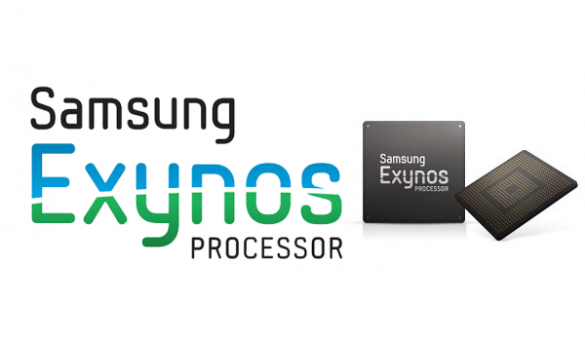
- Process technology: 14 nm
- Number of cores: 8
- Clock frequency: 2×2200 MHz and 6×1600 MHz
Excellent processors are also made by Samsung. They are the ones that are received by South Korean devices sold in most countries, with the exception of the United States (for some reason, devices based on Qualcomm chipsets have to be supplied there). Speaking specifically about the Exynos 7885, it consists of eight cores. The most powerful of these is the Cortex-A73 duo – these cores are capable of operating at a clock frequency of 2.2 GHz. In normal times, six less powerful Cortex-A53 cores will work – their frequency does not exceed 1.6 GHz.
The smartphone processor has an integrated Mali-G71 MP2 accelerator. Its capabilities are sufficient for processing graphics on screens with a resolution of no more than 1920×1200 or 2220×1080 pixels. With such a GPU, the chipset is gaining about 83 thousand points in the AnTuTu benchmark. This is a good result, which suggests that you can play on a smartphone – you will have to reduce the level of graphics in rare cases.
The chip has a built-in modem supporting the LTE-A Cat. 12. That is, in theory, the processor provides a throughput of 600 Mbps. Also, data transmission can be carried out over a Wi-Fi 802.11ac network. The chipset was introduced at the beginning of 2018, due to which it managed to get support for the Bluetooth 5.0 technology. If we talk about the camera, then in this regard the South Koreans have created, if not a masterpiece, then a very successful solution. The first processor was the Samsung Galaxy A8 (2018) – it has a 16-megapixel camera capable of shooting Full HD video at 30 frames / s. But the official site testifies that such a chip is capable of 4K video recording at the same frame rate (the capabilities of the aforementioned smartphone are artificially lowered, since it belongs to the mid-budget segment). The maximum chip supports a single camera with a sensor resolution of 21.7 megapixels or a dual module with 16 megapixel matrices.
The best processors for premium smartphones
Apple A9X
Rating: 4.9

- Process technology: 14/16 nm
- Number of cores: 2
- Clock frequency: 2260 MHz
Apple A9X is the case where the number of cores doesn't solve anything. This chipset consists of only two cores, the clock frequency of which does not exceed 2.26 GHz. However, with a 14-nanometer process technology and a well-optimized operating system, this design is quite enough. It must be remembered that iOS does not support multi-window operation, so it does not need particularly high power.
During the development of this processor, the “apple” company worked not on cores, but on memory bandwidth – compared to its predecessor, it was doubled. This means that applications open much faster, and launching games from now on does not take much time.
The processor includes the 7th series PowerVR graphics accelerator, created from 12 clusters. Its power is evidenced by the fact that a tablet computer iPad Pro with a 12.9-inch display is produced on the basis of this chip. Experts note that the performance of the chipset is very close to the processors from the Intel Core M series, which, by the way, are equipped with in notebooks.
It should be noted that Apple A9X is produced by two companies at once. And if Samsung copes with the release of a chipset using a 14-nanometer process technology, then TSMC's capabilities are only enough for 16 nm. Nevertheless, the difference between the two versions of the processor is almost not felt – devices based on them may differ only in the battery life, calculated only in minutes.
If you are interested in the result in AnTuTu, then it reaches an impressive 176 thousand 'parrots'. The chip is also fine with wireless capabilities. As for the camera, the maximum of the product was not disclosed here. Of course, not the best camera is built into the tablet, because it will rarely be used, and therefore there is no need to judge the chipset by this device.
Xiaomi Pinecone S1
Rating: 4.8
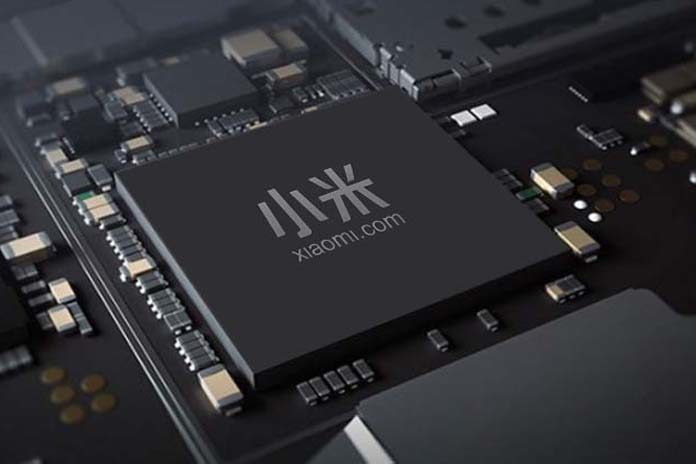
- Process technology: 28 nm
- Number of cores: 8
- Clock frequency: 4×2100 MHz and 4×1400 MHz
A Chinese company Xiaomi also ordered the production of its processor some time ago. The novelty was named Pinecone S1. It is not hard to guess that the firstborn could not be perfect. The 28 nm technical process immediately attracts attention – only budget processors are now being created using it. However, the Chinese have tried to squeeze everything out of it, even if this affects the level of energy consumption. They equipped their creation with eight Cortex-A53 cores. Half of them are clocked at 2.1GHz – these cores are expected to be fired up while playing games or other tricky tasks. The other half of the cores are clocked at 1.4 GHz. These kernels work during normal use of the operating system, when only instant messengers and other similar programs are working in the background.
The Mali-T860 MP4 is used as a graphics accelerator. The chip supports LPDDR3 RAM, the clock frequency of which should not exceed 933 MHz. All this allows the chipset to get about 65K points in AnTuTu Benchmark. The result is not impressive, but for a debutant it is quite good.
So far, this processor for a smartphone can be found only in Xiaomi Mi 5C, which receives not the best reviews on the Internet. The device is estimated at 12-13 thousand rubles, which formally makes it a representative of the mid-budget segment. But there is no doubt that Xiaomi will try to design a more powerful continuation based on the Pinecone S1, which will be produced according to a completely different technical process. Perhaps only because of this the chip got into our rating. Consider it our advance to him.
Qualcomm Snapdragon 835 MSM8998
Rating: 4.8

- Process technology: 10 nm
- Number of cores: 8
- Clock frequency: 4×2450 MHz and 4×1900 MHz
One of the thinnest processors available at the moment. In its production, it is scary to say, a 10-nanometer technical process is used. Five or six years ago it seemed impossible! This is also the case when even the least powerful quartet of cores puts some budget chipset on the blades. These cores run at clock speeds up to 1.9 GHz! Well, the four other cores turned out to be even more productive. Together with the Adreno 540 video accelerator, operating at a clock frequency of 710 MHz, this allows you to enjoy any games without reducing the graphics settings! Surprisingly, there is even support for DirectX 12. The chipset is also capable of boasting support for LPDDR4X RAM, information from which is transmitted over two 32-bit channels. The memory frequency can reach an impressive 1866 MHz.
Such a processor for a smartphone easily gains more than 181 thousand points in the AnTuTu benchmark. But high power is not the only advantage of the top-end chipset. He has support for the completely new 6DoF technology – it serves to improve the performance of VR projects. Also, support for 4K video recording at 60 frames / s is built into the graphics component of the chip – if only the manufacturer would endow its smartphone with an appropriate camera. But that's not all! The processor supports displaying pictures with HDR 10 effect! That is, the image can be no worse than on some expensive TV. Of course, here, too, everything depends on the manufacturer of the device – to display such an image you need not only the appropriate content, but also a rather expensive LCD display. Finally, we cannot fail to note the implemented support for Qualcomm aptX and aptX HD technologies. They help bring sound close to CD quality to Bluetooth – headphones. Of course, the headset itself on its side must also support one of these technologies. The chip is also equipped with an ultra-high-speed LTE modem – it even allows you to use gigabit networks, which is implemented using 4 × 4 MIMO technology.
Qualcomm Snapdragon 835 are received by many flagships, the cost of which exceeds 30 thousand rubles. In particular, this chipset can be found in the version of the Samsung Galaxy S8, shipped to North America. The flagship Xiaomi Mi 6, OnePlus 5 and Google Pixel 2 also have a top processor. These smartphones need unimaginable power, and they get it. Perhaps it is the Snapdragon 835 that shows that the development of mobile processors will soon come to a standstill. Yes, they will gradually become even more energy efficient. They may be more powerful, but what will it give the user? The capabilities of the aforementioned chipset are quite enough. And if a computer can be used to edit and encode the resulting video, then smartphones are rarely used to solve such problems. So, for now, more powerful chips are simply not needed.
Samsung Exynos 9 Octa 8895M
Rating: 4.7
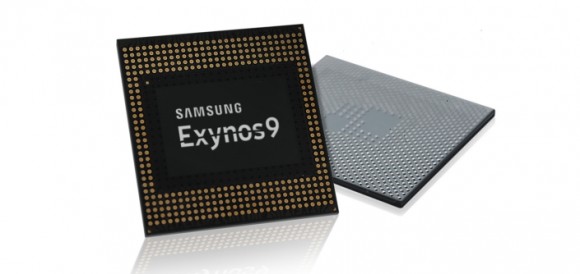
- Process technology: 10 nm
- Number of cores: 8
- Clock frequency: 4×1700 MHz and 4×2300 MHz
The South Korean company Samsung also managed to create a chipset using a 10-nanometer process technology. Its Exynos 9 has eight cores. They are usually divided into two clusters. The least productive cores operate at 1.7 GHz. The more powerful cores run at 2.3 GHz. Such indicators are quite enough for any applications and games intended for the operating system Android. Graphics processing is handled by the Mali-G71 MP20 video accelerator. Its capabilities are also enough for video editing and when launching modern games. He also knows how to recognize visual information received from the camera. For example, in this way the processor can learn to recognize people, vehicles and other objects.
This chipset for smartphones is capable of displaying images on a screen with resolutions up to 3840×2400 or 4096×2160 pixels. The product also supports LPDDR4X format RAM, which has a high operating frequency. Nothing bad can be said about the processor bandwidth. If we talk about the LTE module, then, as you might guess, it is gigabit.
With such a chipset, the creators of smartphones are completely free of all hands. Although there is no doubt that the processor is unlikely to ever appear outside the South Korean devices. Its creators claim that the chip supports 28MP single or 16MP dual cameras. They also pride themselves on supporting 4K video recording at 120fps. However, it is clarified that it is unlikely that a smartphone will be able to write video with such parameters for any length of time – it quickly leads to overheating. Therefore, high-speed shooting is carried out only for a few seconds, while the beginning of the action scene is automatically recognized by the chipset.
Perhaps this particular processor makes it possible to understand why the South Korean flagships are so expensive. No other mobile chipset has such power yet. And no other has such a mass of possibilities (in this rating, we did not tell even half of them).
Conclusion
This is a list of the best mobile processors available to portable device manufacturers at the time of this writing. Note that such chipsets are embedded not only in smartphones, but also in tablets. They are distinguished from their counterparts from desktops and laptops by the ARM architecture, sharpened for processing commands of the operating system Android, iOS, Windows Phone and the like.
Attention! This rating is subjective and does not constitute an advertisement and does not serve as a purchase guide. Before buying, you need to consult with a specialist.


